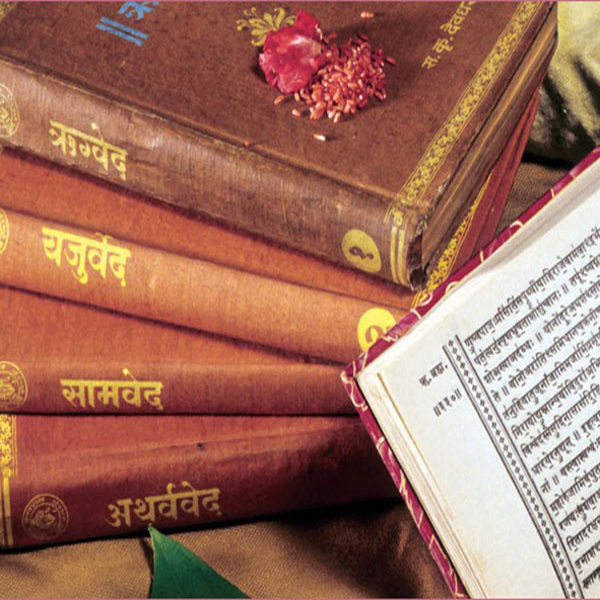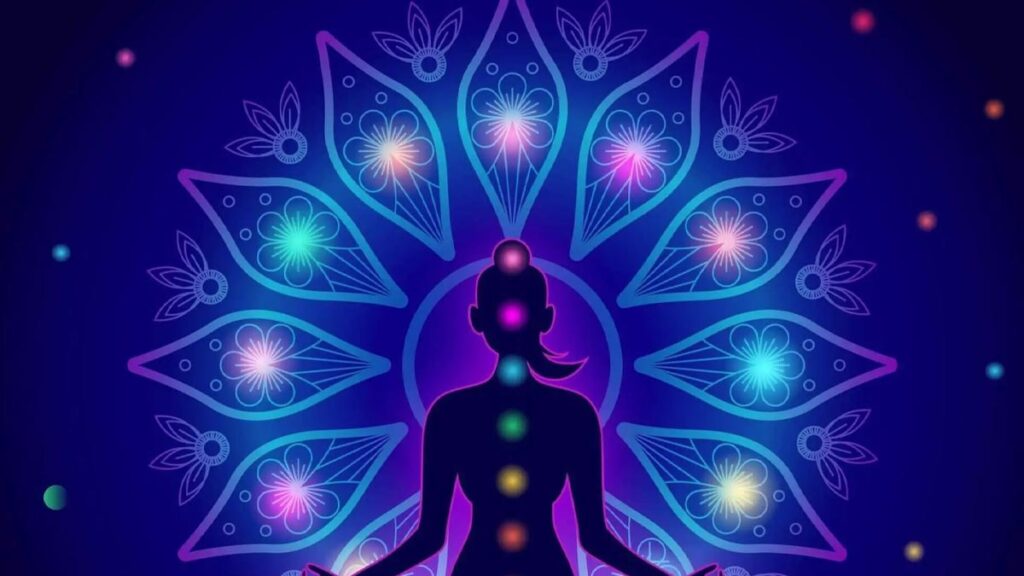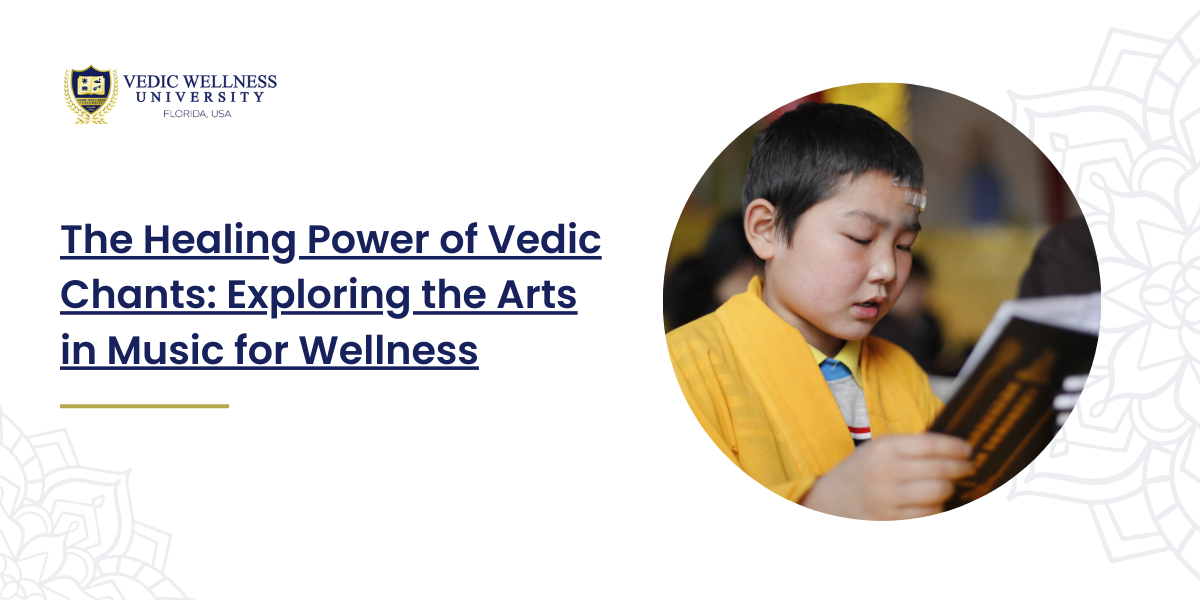Introduction
“ॐ सर्वेशां स्वस्तिर्भवतु।
सर्वेशां शान्तिर्भवतु।
सर्वेशां पूर्णं भवतु।
सर्वेशां मङ्गलं भवतु।”
(Om Sarveshaam Svastir Bhavatu,
Sarveshaam Shaantir Bhavatu,
Sarveshaam Poornam Bhavatu,
Sarveshaam Mangalam Bhavatu)
“May there be well-being in all, May there be peace in all, May there be completeness in all, May there be prosperity in all.”
- Source: Rigveda
This ancient Vedic chants is known for its soothing and harmonizing effects on the mind and body. The repetition of “Om,” combined with the invocation of universal well-being, creates a profound sense of peace and tranquility. The rhythmic chanting aligns with our natural breathing patterns, reducing stress and anxiety while promoting mental clarity and emotional stability.
Ancient Manuscripts and Texts
India’s rich heritage is replete with manuscripts and texts that detail the power of Vedic chants. These scriptures have been meticulously preserved over millennia, providing invaluable insights into the use of sound and music for healing. Below are five major Indian Vedic or ancient texts that contain such scriptures.
1. Rigveda
The Rigveda is one of the oldest known texts in the world, dating back to around 1500 BCE. It consists of hymns dedicated to various deities, and these hymns are chanted during rituals and ceremonies. The Rigveda emphasizes the importance of sound in connecting with the divine and harnessing its power for personal and communal well-being.
2. Sama Veda
The Sama Veda is often referred to as the “Veda of melodies and chants.” It is essentially a collection of hymns from the Rigveda set to musical notation. The Sama Veda’s primary focus is on the musical aspects of chanting, making it a crucial text for understanding the integration of music and spirituality in Vedic practices.
3. Yajurveda
The Yajurveda is a compilation of ritual offerings that were said during various religious ceremonies. It includes the chanting of mantras that are essential for performing Vedic rituals. The Yajurveda’s emphasis on the correct pronunciation and intonation of chants highlights the significance of sound in achieving desired outcomes in rituals.
4. Atharva Veda
The Atharva Veda is known for its focus on everyday life and includes hymns and spells for health, longevity, and protection against diseases. It provides a comprehensive view of how Vedic chants can be used for practical purposes, making it highly relevant for modern-day applications in wellness and healing.
5. Bhagavad Gita
While not a Vedic text per se, the Bhagavad Gita, part of the Mahabharata, contains numerous verses (shlokas) that are recited as chants. The Gita’s teachings on duty, righteousness, and the nature of the self are often conveyed through chanting, offering profound mental and spiritual benefits.

Daily Life Chants for Wellness
Integrating Vedic chants into daily life can significantly enhance mental and physical well-being. Here are ten major scriptures or chants to use, depending on your emotional and physical state, along with guidance on their application.
1. Gayatri Mantra
“ॐ भूर् भुवः स्वः।
तत्सवितुर्वरेण्यं।
भर्गो देवस्य धीमहि।
धियो यो नः प्रचोदयात्॥”
(Om Bhur Bhuvah Swah,
Tat Savitur Varenyam,
Bhargo Devasya Dheemahi,
Dhiyo Yo Nah Prachodayat)
- Source: Rigveda
Situation: To start the day with positivity and clarity.
Frequency: Every morning, 108 times.
Impact: Enhances concentration, reduces stress, and promotes overall well-being.
2. Maha Mrityunjaya Mantra
“ॐ त्र्यम्बकं यजामहे सुगन्धिं पुष्टिवर्धनम्।
उर्वारुकमिव बन्धनान्मृत्योर्मुक्षीय माऽमृतात्॥”
(Om Tryambakam Yajamahe Sugandhim Pushtivardhanam,
Urvarukamiva Bandhanan Mrityor Mukshiya Maamritat)
- Source: Rigveda
Situation: For health and protection against illness.
Frequency: During times of illness or daily, 108 times.
Impact: Provides healing, reduces fear of death, and promotes longevity.
3. Shanti Mantra
“ॐ सह नाववतु।
सह नौ भुनक्तु।
सह वीर्यं करवावहै।
तेजस्विनावधीतमस्तु मा विद्विषावहै॥”
(Om Sahana Vavatu,
Sahanau Bhunaktu,
Sahaveeryam Karavavahai,
Tejasvinavadhitamastu Ma Vidvishavahai)
- Source: Upanishads
Situation: Before starting any educational or spiritual activity.
Frequency: Once before the activity.
Impact: Promotes harmony, cooperation, and effective learning.
4. Durga Mantra
“ॐ ऐं ह्रीं क्लीं चामुण्डायै विच्चे॥”
(Om Aim Hreem Kleem Chamundayai Vichche)
- Source: Devi Mahatmyam
Situation: For strength and courage.
Frequency: During challenging times or daily, 108 times.
Impact: Invokes the goddess Durga for protection, courage, and strength.
5. Saraswati Mantra
“ॐ ऐं सरस्वत्यै नमः॥”
(Om Aim Saraswatyai Namah)
- Source: Saraswati Upanishad
Situation: Before starting studies or creative activities.
Frequency: Daily, especially before studying, 108 times.
Impact: Enhances knowledge, creativity, and wisdom.
6. Hanuman Chalisa
“श्री गुरु चरन सरोज रज, निज मनु मुकुरु सुधारि।
बरनऊँ रघुबर बिमल जसु, जो दायकु फल चारि॥”
(Shri Guru Charan Saroj Raj, Nij Manu Mukuru Sudhari,
Barnaun Raghubar Bimal Jasu, Jo Dayaku Phal Chari)
- Source: Tulsidas’ Hanuman Chalisa
Situation: For removing obstacles and gaining strength.
Frequency: Weekly or during difficult times.
Impact: Provides strength, removes obstacles, and brings peace.
7. Vishnu Sahasranama
“शान्ताकारं भुजगशयनं पद्मनाभं सुरेशं।
विश्वाधारं गगनसदृशं मेघवर्णं शुभाङ्गम्॥”
(Shantakaram Bhujagashayanam Padmanabham Suresham,
Vishvadharam Gaganasadrisham Meghavarnam Shubhangam)
- Source: Mahabharata
Situation: For peace and prosperity.
Frequency: Daily or weekly.
Impact: Brings peace, prosperity, and spiritual growth.
8. Lakshmi Mantra
“ॐ श्रीं महालक्ष्म्यै नमः॥”
(Om Shreem Mahalakshmyai Namah)
- Source: Lakshmi Tantra
Situation: For wealth and abundance.
Frequency: Daily, 108 times.
Impact: Attracts wealth, prosperity, and good fortune.
9. Ganesh Mantra
“ॐ गं गणपतये नमः॥”
(Om Gam Ganapataye Namah)
- Source: Ganapati Upanishad
Situation: Before starting new ventures.
Frequency: Daily, 108 times.
Impact: Removes obstacles and ensures success in new endeavors.
10. Guru Mantra
“गुरु ब्रह्मा गुरु विष्णु गुरु देवो महेश्वरः।
गुरुः साक्षात् परं ब्रह्म तस्मै श्री गुरवे नमः॥”
(Guru Brahma Guru Vishnu Guru Devo Maheshwarah,
Guruh Saakshaat Param Brahma Tasmai Shri Gurave Namah)
- Source: Guru Gita
Situation: For guidance and wisdom.
Frequency: Daily, especially before learning or seeking advice.
Impact: Provides clarity, wisdom, and spiritual guidance.

Conclusion
Our ancient Indian Vedas and texts are a treasure trove of wisdom and practical tools for living a better, healthier, and more fulfilling life. The power of Vedic chants, when integrated into our daily routines, can bring about profound changes in our mental, emotional, and physical well-being. By exploring the arts in music and understanding the significance of these ancient practices, we can reconnect with our roots and harness the healing power of sound for a balanced and harmonious life.
“वसुधैव कुटुम्बकम्”
(Vasudhaiva Kutumbakam)
“The world is one family.”
- Source: Maha Upanishad
Embracing this holistic approach through Vedic Wellness University can guide us towards a path of well-being, unity, and universal harmony.


